Sony PSP
Top 10 Best Sony PSP Games of All Time!
The gaming world had high expectations for Sony’s first handheld console. Sony went so far as to suggest that the PlayStation Portable was going to “elevate portable entertainment out of the handheld gaming ghetto.” Unfortunately for Sony, Nintendo released the DS mere weeks before the PSP launched and continued to dominate the market. The Nintendo DS would go on to become the best-selling handheld system of all time, but the PSP still sold 80 million and was a huge success in its own right. The system had a fantastic library and deserves more credit than it gets.
10
Jeanne d’Arc
2006

Jeanne d’Arc is loosely based on Joan of Arc’s struggles during the English occupation of France in the 15th century. Many of its characters are based on real figures, but the game doesn’t worry too much about historical accuracy. Soldiers in the Hundred Years’ War didn’t really have magical amulets that granted them special powers, and I’m quite sure that Henry VI wasn’t possessed by demons in real life. The gameplay in Jeanne d’Arc is fairly simple as far as tactical RPGs go. The characters all have an affinity for one of three phases, so the battles play out like glorified “rock, paper, scissors” bouts. It’s a relatively easy game too, and there’s nothing preventing you from over-leveling your characters. These “flaws” help make Jeanne d’Arc accessible to players who aren’t necessarily familiar with the genre and make it extremely easy to pick up and play. The game was reviewed well, but it seemed to get lost in a sea of PS1 and PS2 ports. No PSP collection would be complete without Final Fantasy Tactics and Tactics Ogre, but Jeanne d’Arc was an experience that you could only have on the PSP. If you’re a history buff who enjoys anime and French accents, Jeanne d’Arc is the game for you.
9
Monster Hunter Portable 3rd
2010

No series was more crucial to the success of the PSP than Monster Hunter. The open-world action/RPGs began on the PS2, but they really found their following on the PSP. Despite their immense popularity, the Monster Hunter games were not well-received initially. The middling reviews were ultimately a symptom of critics not understanding the subtleties of the game. The point in Monster Hunter is to embark on quests to hunt or capture specific monsters. In most RPGs, players are rewarded with weapons, money, or arbitrary experience points for defeating their enemies. In Monster Hunter, players simply use the parts of the slain monsters to create better weapons and armor. The new equipment is then used to battle stronger monsters. Monster Hunter also takes more patience than most games. Instead of mindlessly hacking away at your enemies, you have to carefully observe their movements in order to find openings. There are no health meters or visible hit points to speak of, and you instead have to make note of behavioral changes to gauge the well-being of your enemies. For example, monsters may start limping if they are injured or will move slower when they are fatigued. If you’re looking for a traditional Japanese RPG, look elsewhere. Monster Hunter is exactly what it claims to be. It’s a hunting game… with monsters. Four Monster Hunter games were released on the PSP. Monster Hunter Freedom Unite has the most content, but the Japan-only Monster Hunter Portable 3rd is being recognized mostly because its monsters are more dynamic and unpredictable.
8
WipEout Pure
2005
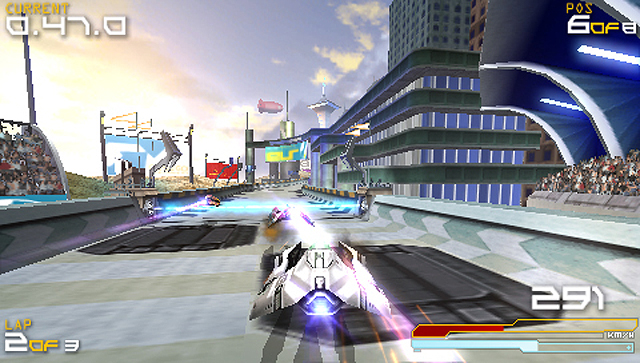
For the uninitiated, WipEout is a futuristic racing series known for its fast-paced gameplay. The basic premise is similar to F-Zero, but the addition of power-ups helped WipEout establish an identity of its own. During the races, players will have the opportunity to pick up shields, turbo boosts, mines, shock waves, rockets, and missiles. These items made the races seem even more intense than they already were and encouraged players to be even more aggressive. The WipEout series is also known for an electronica soundtrack that further highlights the energetic gameplay. As its name suggests, WipEout Pure follows the same formula of its predecessors. The new option to replenish energy by absorbing the currently-carried weapon makes the game somewhat more strategic than previous games, however. Sony sounded arrogant when they promised to take handhelds out of the “gaming ghetto” with the PSP, but WipEout Pure truthfully offers experiences that weren’t possible on the Game Boy Advance or the Nintendo DS. The designers intended WipEout Pure to play like WipEout 2097 on the PS1, but WipEout Pure offers an experience more in line with what you’d expect from a PS2 game.
7
Grand Theft Auto: Chinatown Wars
2009

With Liberty City Stories and Vice City Stories, PSP owners got a taste of PS2-era Grand Theft Auto games in a portable format. Chinatown Wars, in contrast, is played from an overhead view and is more akin to the first two Grand Theft Auto games on the PS1. The top-down perspective might sound like a regression, but it’s a perfect fit for a handheld system, (perhaps because you are naturally looking down on the screen when you play.) Despite the traditional perspective, the gameplay itself features a number of refinements over its predecessors. In previous Grand Theft Auto games, players typically had to leave the vicinity of the police in order to evade them. In Chinatown Wars, players can increase their chances of escape by disabling the police vehicles that are pursuing them. The game also features a surprisingly deep drug-dealing sub-plot which requires players to pay attention to market conditions and geography. The PSP port of Chinatown Wars is missing the touch screen functionality and the cel-shaded graphics from the original Nintendo DS version, but it boasts a handful of new missions and features a lot more music. Regardless of the platform, Chinatown Wars is one of the most interesting games in the series.
6
The Legend of Heroes: Trails in the Sky
2006

The first Legend of Heroes game was released in 1989 as a spinoff to Falcom’s own Dragon Slayer series. Trails in the Sky was the sixth game in the Legend series, and the first in a new three-chapter arc. The games 1980s roots are apparent when you play the game, and the turn-based battles and “super deformed” characters feel like a throwback to a simpler time. This is not to say that the game is light on content. You’re likely to lose several hours on side quests, escort missions, and gem crafting. The “teenagers band together to save the world” plot doesn’t break a lot of new ground, but the characters are likeable, the story is entertaining, and the writing is enjoyable. Each character is written in a way that makes them feel unique, and this ultimately gives you an incentive to speak to absolutely everyone you encounter. PSP owners in Japan got their hands on the game in 2006, but the task of translating the game into English was so daunting that it took until 2011 before an English version was released. Trails in the Sky deliberately avoids the blockbuster model used by Square Enix, and is instead driven by dialogue and strong writing. It’s the ideal game for anyone looking for a traditional JRPG.
5
Lumines
2004

Lumines is to the PSP what Tetris was to the original Game Boy. The objective in the game is to manipulate falling blocks in order to create rectangles comprised of matching colors. The matching blocks don’t disappear instantly like they do in most puzzle games, however. Instead, the game has a timeline mechanism that clears out the blocks in a sweeping manner. When the matching blocks are swept away, the unmatched blocks begin to pile up. The timeline mechanism is synced up with the soundtrack, so music plays an extremely important role in the game. As players advance, new levels (or “skins”) are unlocked. These skins have their own visual layouts and their own background tracks. Since the music and timeline mechanism are synced, each skin also has its own unique feel. Lumines II was very similar to its predecessor, but featured more skins and was a more complete game in many ways. Sadly, the soundtrack in Lumines II was filled with unfortunate music choices. On that note, I’m recognizing the first Lumines mostly due to its superior soundtrack.
4
Patapon 2
2008

The Patapon games are hard to explain since there’s really nothing else like them. The premise involves leading an army of tribal warriors into battle and instructing them with drum-based commands. Patapon and its sequels basically control like rhythm games, and each face button on the PSP is used for a different drum. Depending on the sequence used, the Patapon warriors can be instructed to attack, defend, or take other actions. Using the proper sequence in time with the music will result in bonuses, but the tribe will become confused if the player enters a sequence out of rhythm. The gameplay in Patapon is perfect for a handheld system and embodies the “pick up and play” style that all handheld games should strive for. The stylistic 2D silhouetted visuals don’t push the PSP as hard as some of the other games on this list, but the art design is a great fit for the game and the miniature creatures are nothing short of adorable. Patapon 2 felt like an extension of its predecessor, but the combat allowed for more flexibility and it was easier to customize your armies. All three Patapon games on the PSP are worth a look, but the second entry marked a high point for the series.
3
Burnout Legends
2005

Arcades were running on fumes in the early 2000s, but the arcade racing genre was still gaining momentum. Burnout is the premier franchise in the sub-genre, and it emphases spectacular crashes over sensible driving. Players are encouraged to drive aggressively, and they are rewarded in accordance to how much carnage they cause. Under this set of rules, driving head-on into oncoming traffic is a valid strategy! Burnout 3 is one of the best arcade racers of all time, so a stripped-down PSP version would have been perfectly acceptable. Surprisingly, Critereon went the extra mile with Burnout Legends. Although Burnout 3 is the primary inspiration, Legends is basically a “greatest hits” package that features tracks and gameplay modes from the first three Burnout games. There are nine distinct gameplay modes, and you’ll have the opportunity to race on familiar tracks with new guidelines in place. The “Takedown” mode from the third rewards you with speed boosts when you ram other cars off the road, and it was interesting to race through classic tracks with this new set of rules applied. Likewise, the “Pursuit” mode from Burnout 2 changed the dynamic of the Burnout 3 tracks. There are roughly 90 vehicles to unlock (ranging from compact cars to full-sized pickups), and it’s the perfect game to play on the go since you always feel like you’re making progress toward something. There will always be compromises when porting a game from a console to a handheld device, but I was surprised at how many concessions had to be made in Burnout Legends. It runs laps around the Nintendo DS counterpart, and it’s the perfect showpiece for the PSP.
2
Metal Gear Solid: Peace Walker
2010

Peace Walker was technically the third Metal Gear game designed for the PSP, but it was the first to be directed by series creator, Hideo Kojima. Like other games in the series, Peace Walker is built around stealth-based gameplay and features a myriad of compelling characters. The story picks up right where Metal Gear Solid 3 left off and helps create a bridge between Big Boss’ transition from hero to antagonist. The ability to recruit enemy soldiers was carried over from Portable Ops, the camouflage mechanics from Metal Gear Solid 3 were at play once again, and the bonus missions felt like a throwback to VR Missions. It’s as though the game took everything that was great about Metal Gear and put it into one game. Peace Walker uses the streamlined controls from Metal Gear Solid 4, and the over-the-shoulder camera, the ability to move while crouched, and the combo-centric “CQC” system all returned. It would be easy to write the game off as a PSP spinoff, but Peace Walker is one of the most interesting games in the series. Despite being released on Sony’s smallest system, Kojima considers Peace Walker to be one of his biggest games.
1
Shin Megami Tensei: Persona 3 Portable
2009

A stylish JRPG with a focus on life sim elements, Persona 3 follows a group of high school students who are investigating a hidden time period that exists between one day and the next. This so-called “Dark Hour” is infested by demonic creatures called Shadows, and the aforementioned students are able to summon fantastical manifestations of their inner selves in order to keep the creatures at bay. The Dark Hour is mostly defined by dungeon-crawling and random battles, but the rest of the game revolves around social links. During the day, players will attend class, go to the movies, find employment, build friendships, and generally try to live a balanced lifestyle. This concept works surprisingly well because of the compelling cast. The characters are likable, so you’ll actually want to spend time with them and learn more about them. I neglected to mention Persona 3: Portable on an earlier iteration of this list because I generally try to avoid highlighting ports from previous generations. Upon further reflection, it’s unfair to describe Persona 3 Portable as a simple port. First of all, the PSP version doesn’t really feel like a last-gen port since Persona 3 arrived so late into the PlayStation 2’s life cycle. Also, Persona 3 Portable offers tons of features that aren’t in the original version. For example, the revised battle system lets players control every party member instead of relying on AI. Another significant addition is the inclusion of a new (female) protagonist. For obvious reasons, the dynamic of the game’s life sim component is completely different when you’re playing as a chick. Persona 3 Portable is a great fit for the PSP, and this list didn’t feel complete without it.

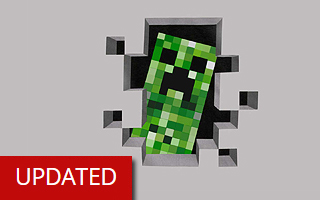
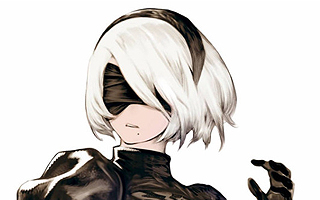
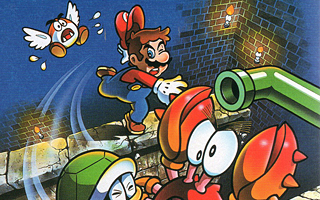
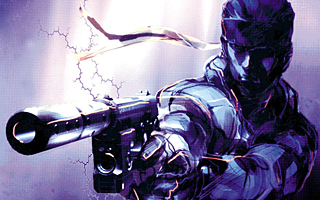
Do you agree with this list? Let us know what you think by leaving a comment below. Your opinion matters!